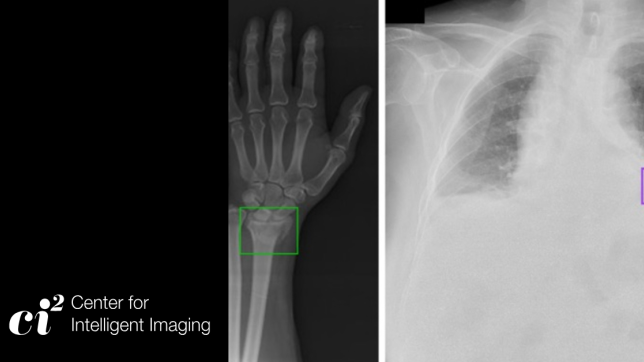In a recent presentation, "AI Has Got Your Back… and Knees: Opportunities for Inline Deployment of MSK Research Models," University of California, San Francisco's (UCSF) Center for Intelligent Imaging's (ci2) research data analyst, Madeline Hess, showcased the transformative potential of artificial intelligence (AI) in musculoskeletal (MSK) research, particularly focusing on the practical applications of inline AI deployment. Leveraging the groundwork laid by ci2's Jesse Courtier, MD, Hess focuses on exploring the potential to generate interactive 3D models from MRI scans, with her role at ci2 centering on the transformation of existing technologies into user-friendly tools applicable across various fields.
Hess discussed the challenges of chronic low back pain, a complex and prevalent issue, and the opportunity to enhance patient care by narrowing the gaps between radiology, surgery and patient education. "We produced a whole suite of useful AI models tailored for lumbar spine analysis that could perform tasks like segmentation and anomaly detection," Hess shares. Trained on scans spanning from 2018 to present day, these AI models automatically extract image-based metrics which can be used in applications from biomechanical models to diagnostic tool enhancements that could aid in large-scale studies and help address biases in healthcare. However, even more significantly, Hess demonstrated the inline deployment of AI models during scans (work developed with Yang Yang, PhD, and other colleagues), offering immediate access to additional data for clinicians. This vision heralds a new era of personalized and efficient health care, where technology becomes an integral part of the diagnostic and treatment process.
An innovative aspect of these models lies in the ability to extract quantitative anatomical shape-based features which are crucial to moving research forward to understand the potential drivers of chronic low back pain. Hess also worked with a team to develop and deploy a segmentation and classification model for identifying modic changes in vertebral endplates, addressing a critical gap in current radiology reports. This fully automatic model for vertebral endplate degeneration not only saves time but also allows for pixel-wise quantification of changes, enabling more nuanced examination and reporting of change progression in a clinical setting.
Exemplifying the real-time applicability of the developed models with a demonstration on the Siemens VIDA 3T and Siemens FreeMax 0.55T MRI scanners, Hess showcases the potential for inline AI work. This integration of AI into the imaging process has the potential to revolutionize data access in clinical care by providing immediate information to clinicians, empowering them with valuable insights during patient scans.
This technology has the potential to impact patient health literacy as well. "We have really complicated terminology to describe visual things," Hess notes. With this being a focal point of this research, highlighted by both Hess and Dr. Courtier, AI has the power to provide visual representations of intricate medical data. These visualizations empower patients to comprehend their medical conditions more intuitively, making complex information more accessible and providing clinicians with valuable insights for informed decision-making, fostering a collaborative and informed health care environment.
As the ci2 team navigates these transformative technologies in chronic low back pain research, it becomes evident that collaborative efforts from researchers, clinicians and AI specialists, including insights from Hess, Dr. Yang, and Dr. Courtier, are shaping the future of health care. These strides made at ci2 exemplify the institution's commitment to pushing the boundaries of medical research and technology, ensuring a more accessible future for pain patients.



